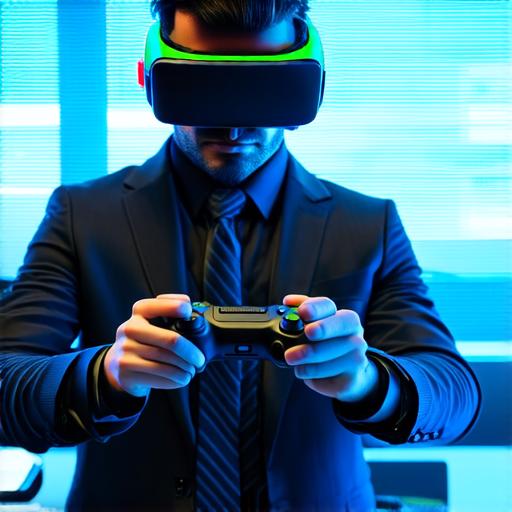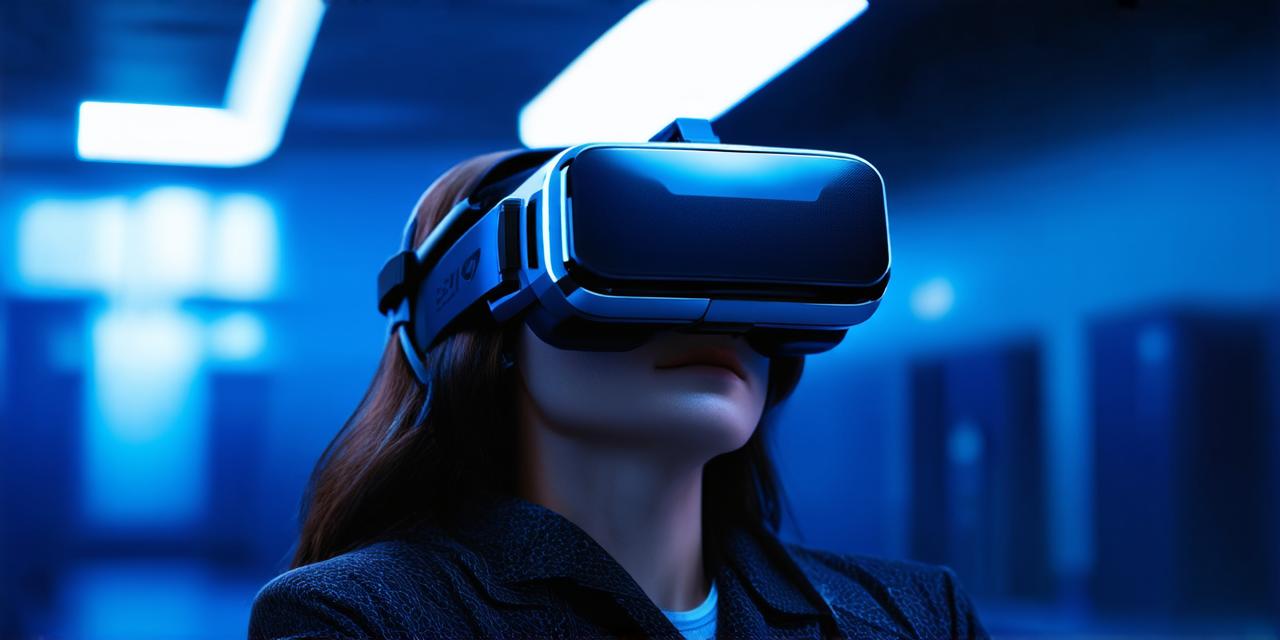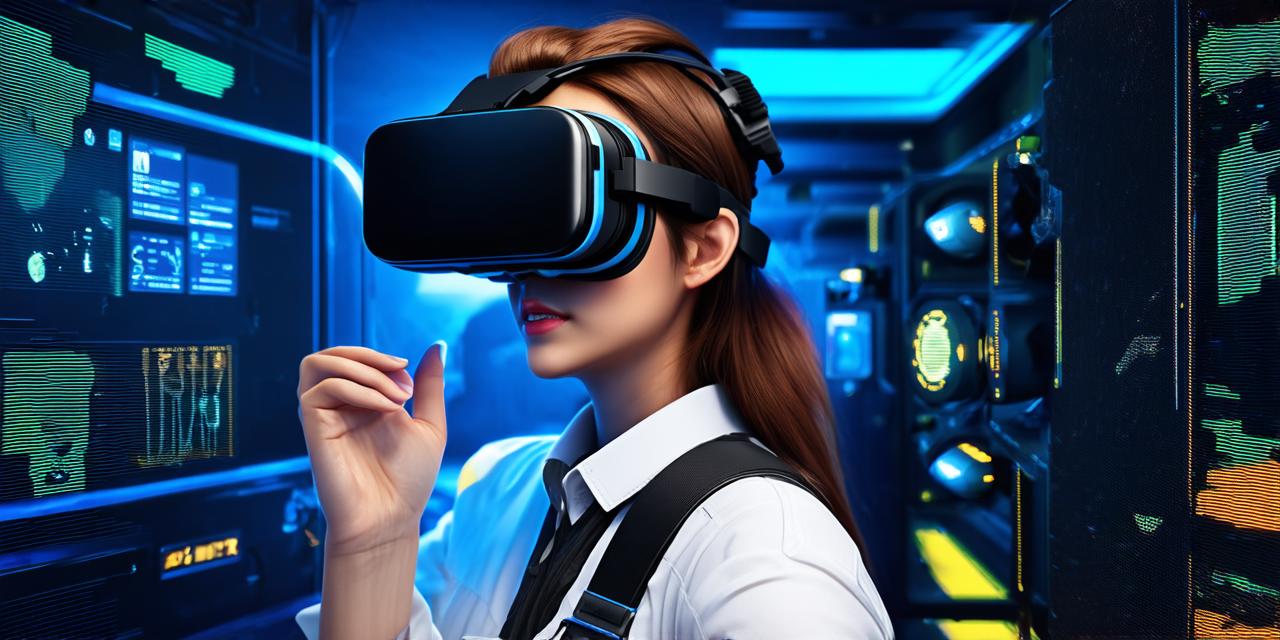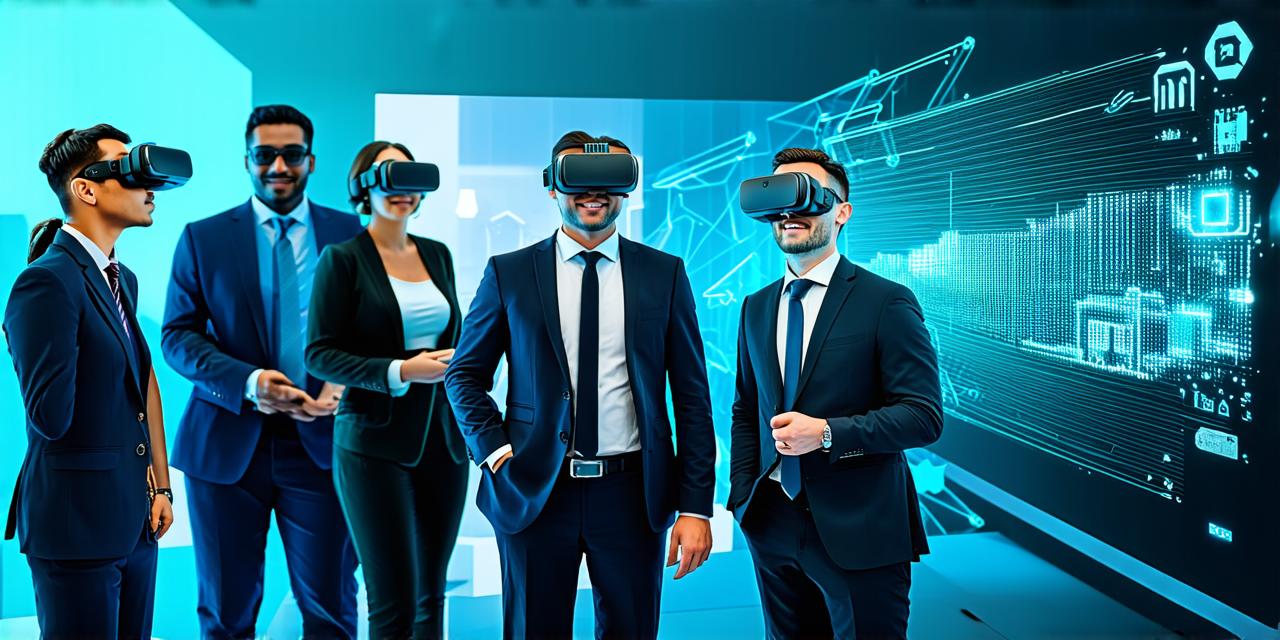1. Gaming:
Virtual reality has had a significant impact on the gaming industry, providing an unprecedented level of immersion and interaction. With VR headsets, gamers can step into their favorite virtual worlds and engage with them in ways that were previously impossible. For example, players can explore the vast landscapes of Skyrim or battle against alien creatures in a high-quality environment.
In addition to providing an immersive gaming experience, VR also offers new opportunities for game developers to create interactive and engaging experiences. Developers can use VR technology to create educational games that teach players about history, science, or even language skills. This is particularly useful in areas where traditional learning methods may not be effective.
For instance, VR games like “Beat Saber” and “Tilt Brush” have become popular in recent years because they provide a unique experience that cannot be replicated through traditional gaming methods. These games allow users to physically move their bodies and interact with virtual objects in real-time, creating an immersive experience that is both fun and challenging.
1. Healthcare:
Virtual reality has also found applications in the healthcare industry, particularly in areas such as medical training and pain management. Medical students can use VR simulations to practice surgical procedures, allowing them to gain hands-on experience without risking patient lives.
In addition, VR has been shown to be effective in managing chronic pain. By immersing patients in virtual environments that distract and engage them, VR can help to reduce pain levels and improve overall well-being. This is particularly useful for patients who are unable to travel or participate in traditional therapies.
For instance, a company called Psious has developed VR technology that helps people with anxiety and post-traumatic stress disorder (PTSD) to confront their fears and overcome them in a safe and controlled environment. By exposing patients to virtual representations of their triggers, Psious can help them learn coping mechanisms and improve their mental health.
1. Education:
Virtual reality has also found applications in education, particularly in areas such as history, language learning, and science. For example, students can use VR simulations to explore ancient civilizations or practice speaking in a foreign language in virtual settings.
In addition, VR can also be used to create interactive and engaging educational experiences that are particularly useful for students who may have difficulty concentrating or staying engaged in traditional classroom settings. For instance, VR simulations can be used to teach students about complex scientific concepts by allowing them to interact with virtual objects and observe their behavior.
For example, a company called Discovery VR has created a VR experience that allows students to explore the human body in an interactive way. By using virtual reality technology, students can learn about the different systems of the human body in a more engaging and memorable way than traditional textbooks or lectures.
1. Tourism:
Virtual reality has also found applications in the tourism industry, particularly in areas such as travel planning and immersive experiences. With VR headsets, users can explore virtual representations of different destinations, allowing them to experience the sights and sounds of a particular location without ever having to leave their homes.
In addition, VR technology can also be used to create immersive experiences that allow people to virtually visit different destinations in a more engaging way than traditional photographs or videos. For instance, a company called Within has created a VR experience that allows users to explore the Great Barrier Reef in Australia without ever having to leave their homes.
1. Training:
Virtual reality has also found applications in training, particularly in areas such as aviation, military, and healthcare. By providing immersive experiences that simulate real-world scenarios, VR can help trainers to prepare their trainees for the challenges they may face in their respective fields.

For instance, the United States military has been using VR technology to train soldiers for combat situations. By using virtual reality simulations, soldiers can practice different scenarios and develop their skills in a safe and controlled environment. This not only reduces the risk of injury or fatalities but also saves resources and costs associated with live training exercises.
Conclusion:
Virtual reality is an innovative technology that has found applications across various industries, including gaming, healthcare, education, tourism, and training. By providing immersive experiences that allow users to engage with virtual environments in real-time, VR can help to improve learning outcomes, reduce pain levels, and increase productivity in a variety of settings.
As VR technology continues to evolve, we are likely to see even more creative applications emerge in the future. Whether you’re a gamer, student, or healthcare professional, virtual reality has something to offer that can help to enhance your learning experience or improve your overall well-being.




